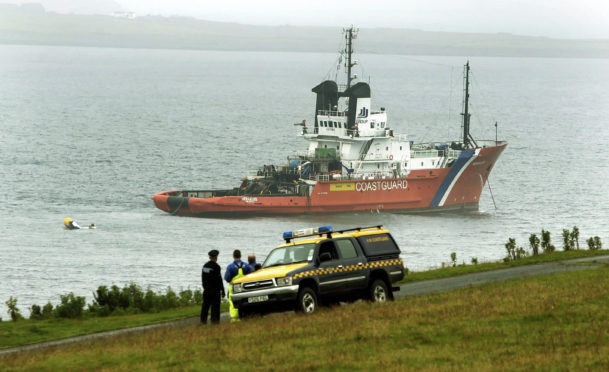Ultimate responsibility for the safety of offshore workers on a doomed Super Puma helicopter which crashed into the sea off Shetland lay with the chief pilot, a fatal inquiry has heard.
Steve O’Collard, the chief technical pilot for CHC Scotia, the operator of the ill-fated copter, also revealed that providing more rigorous submersible training – such as is being used in Norway – could put “people at risk of injury” during the training.
Four offshore workers died on the day of the crash back in August 2013, with a fifth committing suicide four years later.
Mr O’Collard, who described his experience of flying helicopters since 1990, and is a qualified experimental test pilot for CHC, told the fatal accident inquiry looking into the circumstance of the horror accident that the Super Puma L2 model involved was taken out of North Sea offshore flying in 2018 for more modern models.
He added that but significant improvements in training had been introduced throughout the industry since the 2013 crash.
He agreed with the Sheriff Principal Derek Pyle, that at the time of the tragedy, the helicopter industry was “some 15 years” behind that of the commercial airline industry – but had since “caught up”.
Mr O’Collard told the inquiry: “It is fair to say we were slightly behind fixed wing [industry]. Things have moves on loads since then.
“The standard of [flight] automation and information [available] for pilots have improved significantly in the last 10 years.
“We have to operate in a very much rigid way than the early days of the offshore industry.”
Following the tragedy the three main helicopter operators in the UK at the time – CHC, Bristow and Bond – formed a review group with US operators, called Heli Offshore, in a bid to update procedures, including the information about automation, height and speed, during landing approaches.
The inquiry has heard evidence how flight instruments were “not monitored effectively” by the pilots in the moments leading up to the crash.
The Air Accidents Investigation Branch said a lack of monitoring meant a reduction in air speed was not noticed by the pilots and attempts to recover control were too late.
The inquiry has heard how there was a “lack of communication” between the pilots – with the commander in control of the flight more experienced than his co-pilot.
The Sheriff Principal asked if the “primary responsibility” for the safety of passengers was with the pilot at the controls, he replied: “Yes, of course. He is the only person who knows what control options he is putting to place for the helicopter on a flight path.
“Throughout aviation it is the commander who is responsible for everything, in the same terms as the captain of the ship.”
Asked if there were any other way to transport offshore workers to rigs and platforms, Mr O’Collard said “walk-to-work vessels” operate in the southern North Sea.
But he added: “The fundamental problem is they require a reasonable sea state. In the northern North Sea that does not happen very often. It is not a practical solution, so you are stuck with helicopters.”
- October 20, 2020
- October 20, 2020
- October 19, 2020
- September 14, 2020
- September 11, 2020
- September 10, 2020
The Sheriff Principal also asked about submersive training, and how some surivivors described how the training in the Norwegian sector was “more rigid” than the UK equivalent, involving wave simulation and real-life training in the sea within a harbour.
But Mr O’Collard said that making training “more real-life” could actually injure participants.
The inquiry continues.
